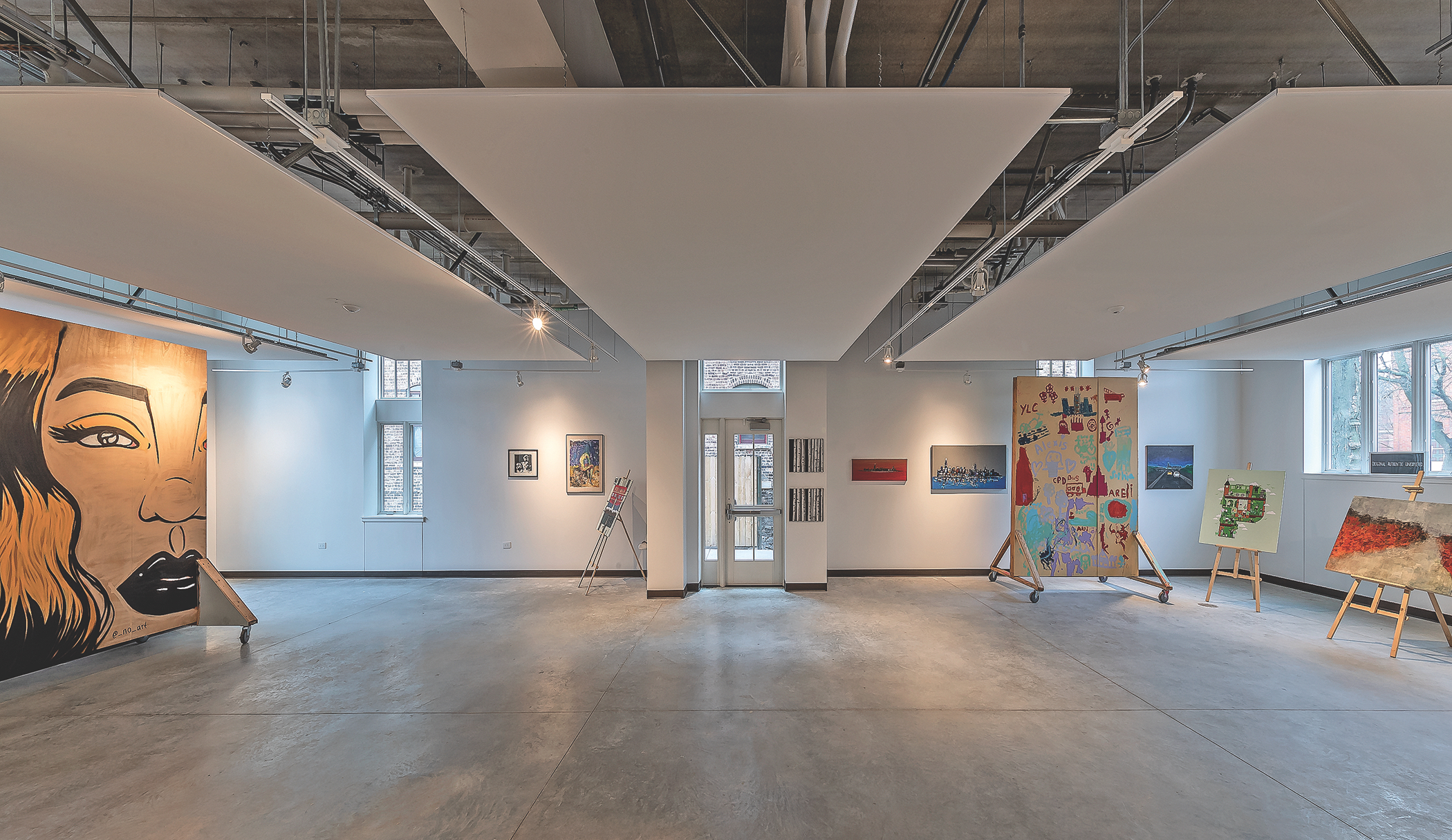The statistics are grim. According to Harvard’s Joint Center for Housing Studies, nearly half of all renter households (20.4 million) spent more than 30 percent of income on housing in 2019; 17.6 million households spent more than 50 percent. The National Low Income Housing Coalition reported that there were only 37 affordable and available homes for every 100 extremely low-income renter households nationwide in 2019.
Then there are the homeless—580,466 by the U.S. Department of Housing & Urban Development’s last count (January 2020); of these, 37,252 were veterans. HUD estimated that 1.4 million people slept in homeless shelters at some point in 2018. During the 2016-17 school year, 1.35 million children experienced homelessness at some point, reported the National Center for Education Statistics.
Despite the grim statistics, energetic developers, nonprofit groups, and their design and construction teams are finding ways to build housing that is not only affordable, but aesthetically pleasing and environmental responsible as well. Let’s take a look at 13 of them.
1. CAPITOL VISTA | Washington, D.C.
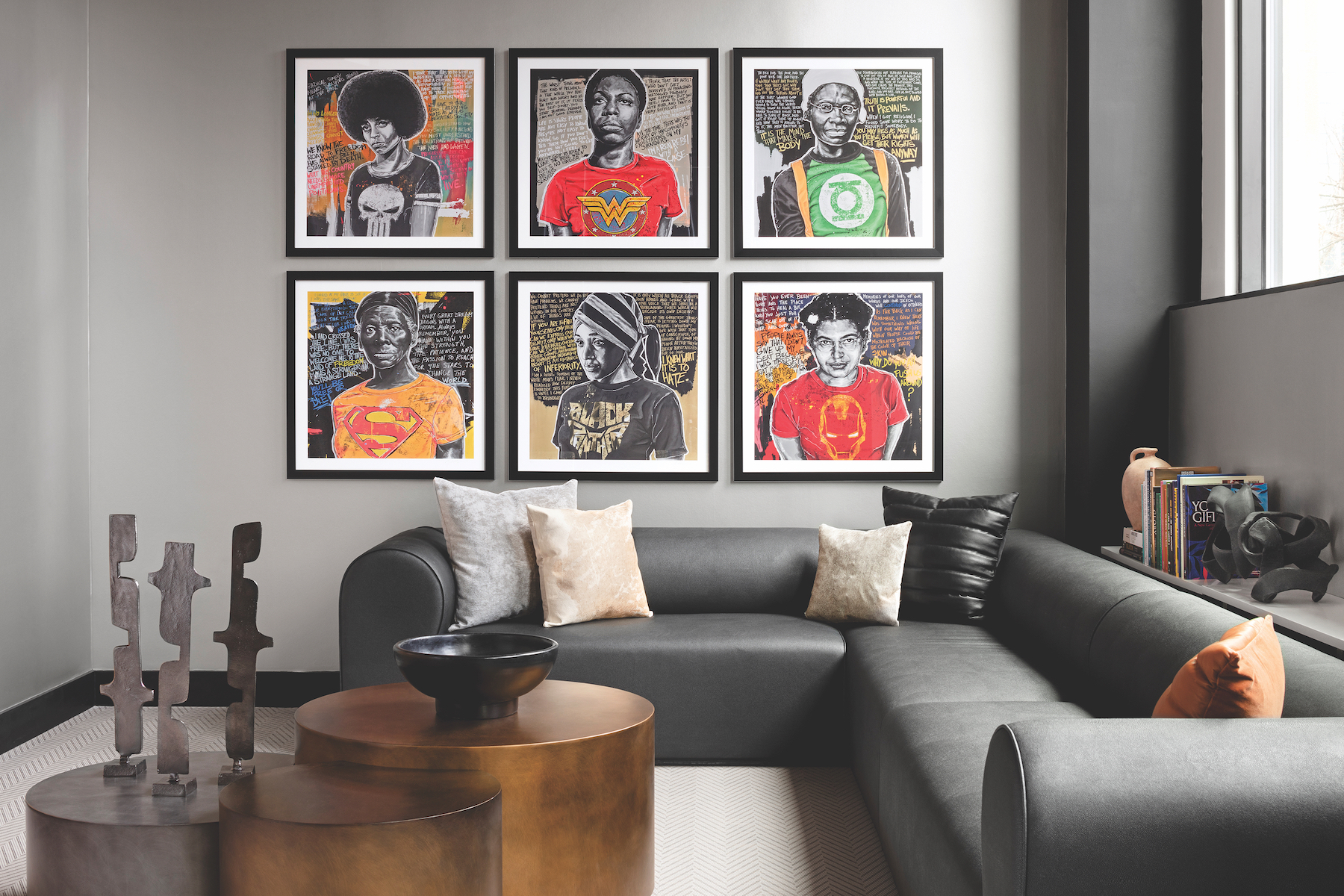
Located eight blocks north of the U.S. Capitol, Capitol Vista provides 104 studio and one- and two-bedroom rentals ($1,131 to $1,354/month): 21 at 30% AMI, 83 at 50% AMI. The $50 million enterprise may be unique in having Black owners (Dantes Partners), a Black property manager (Faria Management), and a Black interior designer (Determined by Design, founded by Kia Weatherspoon, NCIDQ, ASID, a Building Design+Construction 2020 “40 under 40” honoree). Grimm + Parker (architect) headed the team: SK+A Structural Engineers (SE, CE); Wiles Mensch Corp. (CE, landscape design); Century Engineer (MEP); MaGrann Associates (sustainability); and Hamel Builders (GC).
2. HOPEWORKS STATION NORTH | Everett, Wash.
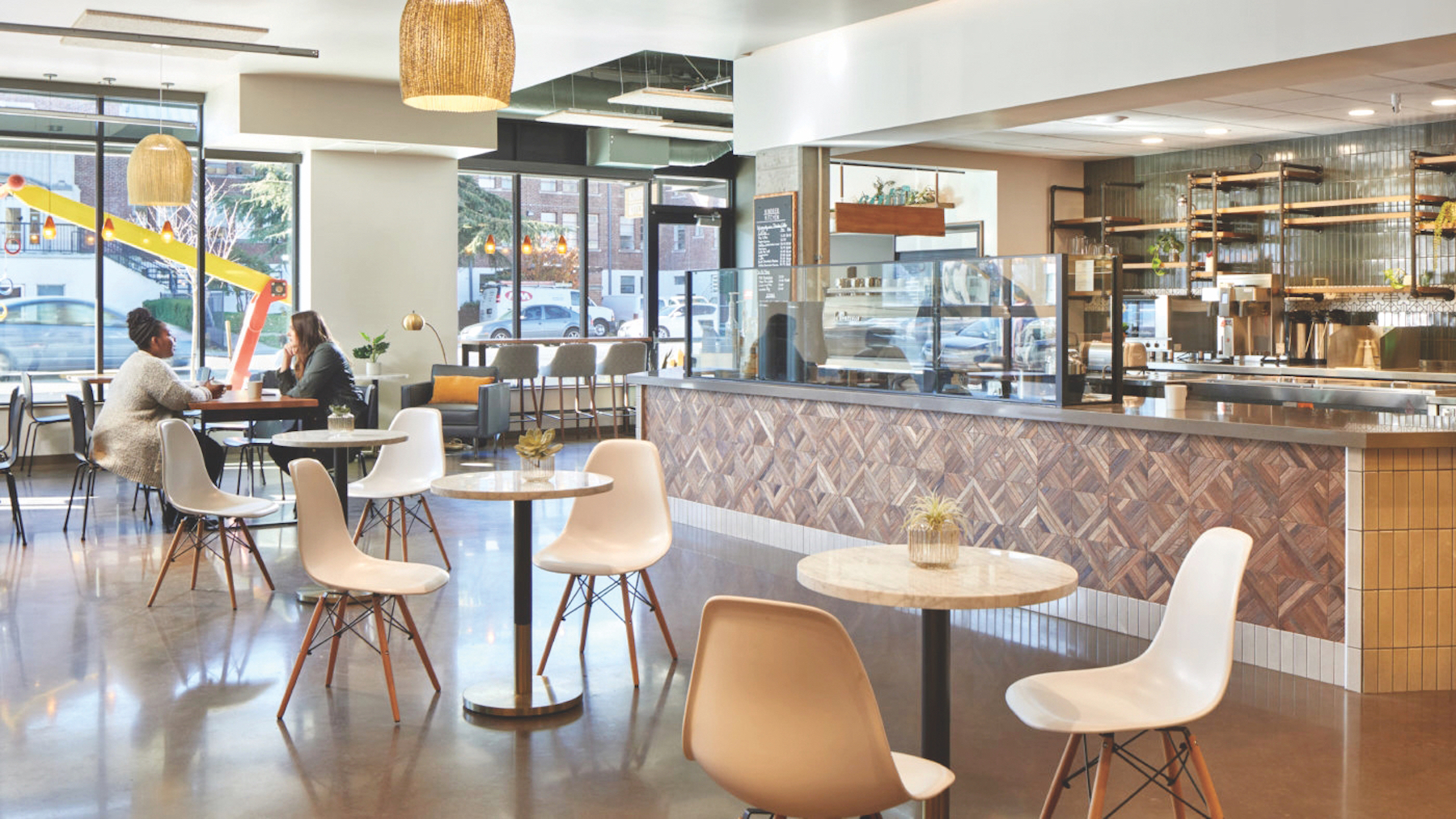
This four-story, net-zero-energy, LEED for Homes Platinum apartment complex has been selected for the Living Future Challenge affordable housing pilot and participated in the LEED Multifamily Midrise pilot to demonstrate compliance with Washington State’s Evergreen Sustainable Development Standard. Its 532 solar panels generate 198,000 kWh/year. GGLO and Dykeman Architects (designers) steered the $17.7 million project for HopeWorks Social Enterprises, with Beacon Development Group (development consultant), O’Brien360 (sustainability consultant), and Kirtley-Cole Associates (GC). The 65 studio and one- and two-bedroom units house homeless youth and veterans earning 30-50% AMI.
3. THE AYA | Washington, D.C.
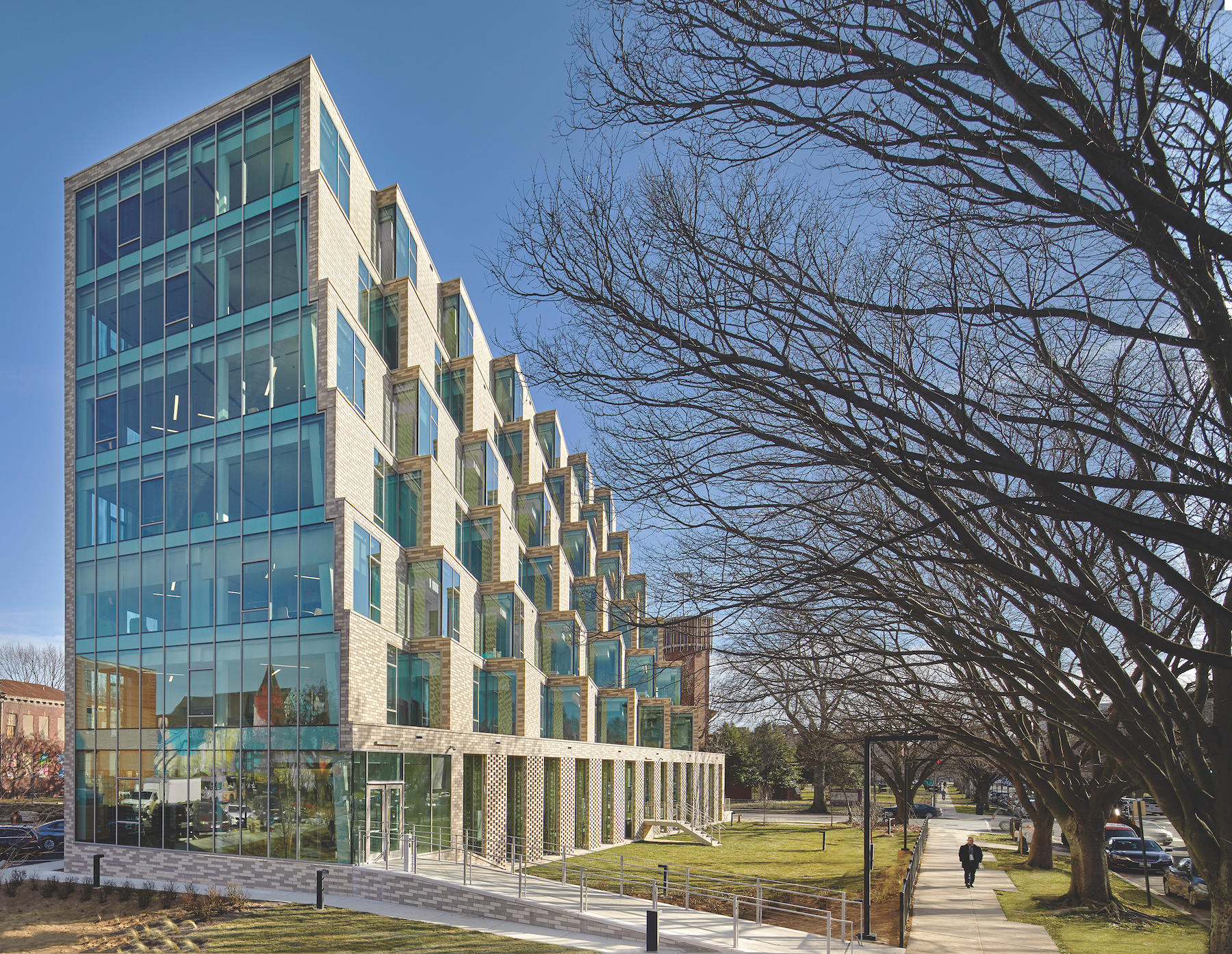
The Aya offers emergency housing for up to 50 families—largely mothers with young children—in Southwest Washington. Each color-coded floor has 7-10 units; adjoining rooms can be linked via lockable doors to accommodate families up to 12. The joint venture of LEO A DALY and Studio Twenty Seven Architecture designed the $21 million center for the D.C. Department of General Services. Silman Associates (SE), A. Morton Thomas (CE), Setty & Associates (MEP), and Blue Skye Construction (design-build contractor) contributed.
4. FOUR TEN LOFTS | Baltimore, Md.
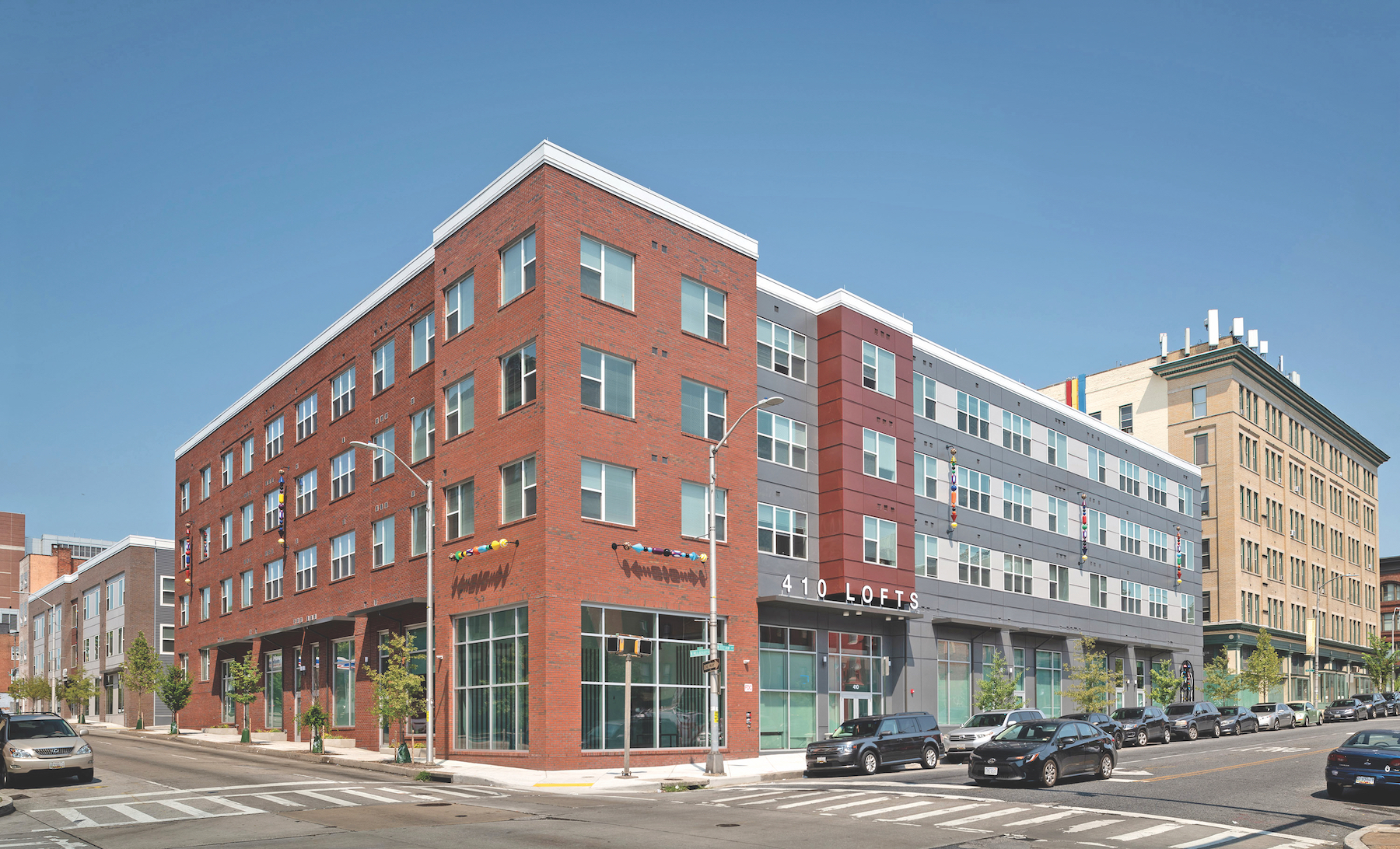
Designed for artists and the homeless, this $14.2 million complex, in the Bromo Tower arts and entertainment district, provides eight three-bedroom apartments in one building and 68 one- to three-bedroom units in a second structure. The latter building has a two-story gallery, sound rooms for musicians, an art workroom, and a spray booth. All rooms come fully furnished; United Way outfitted the apartments with bedding, towels, dishes, and small appliances. Energy Star Multifamily and National Green Building Standard certification were achieved.
5. LINEAGE | Alexandria, Va.
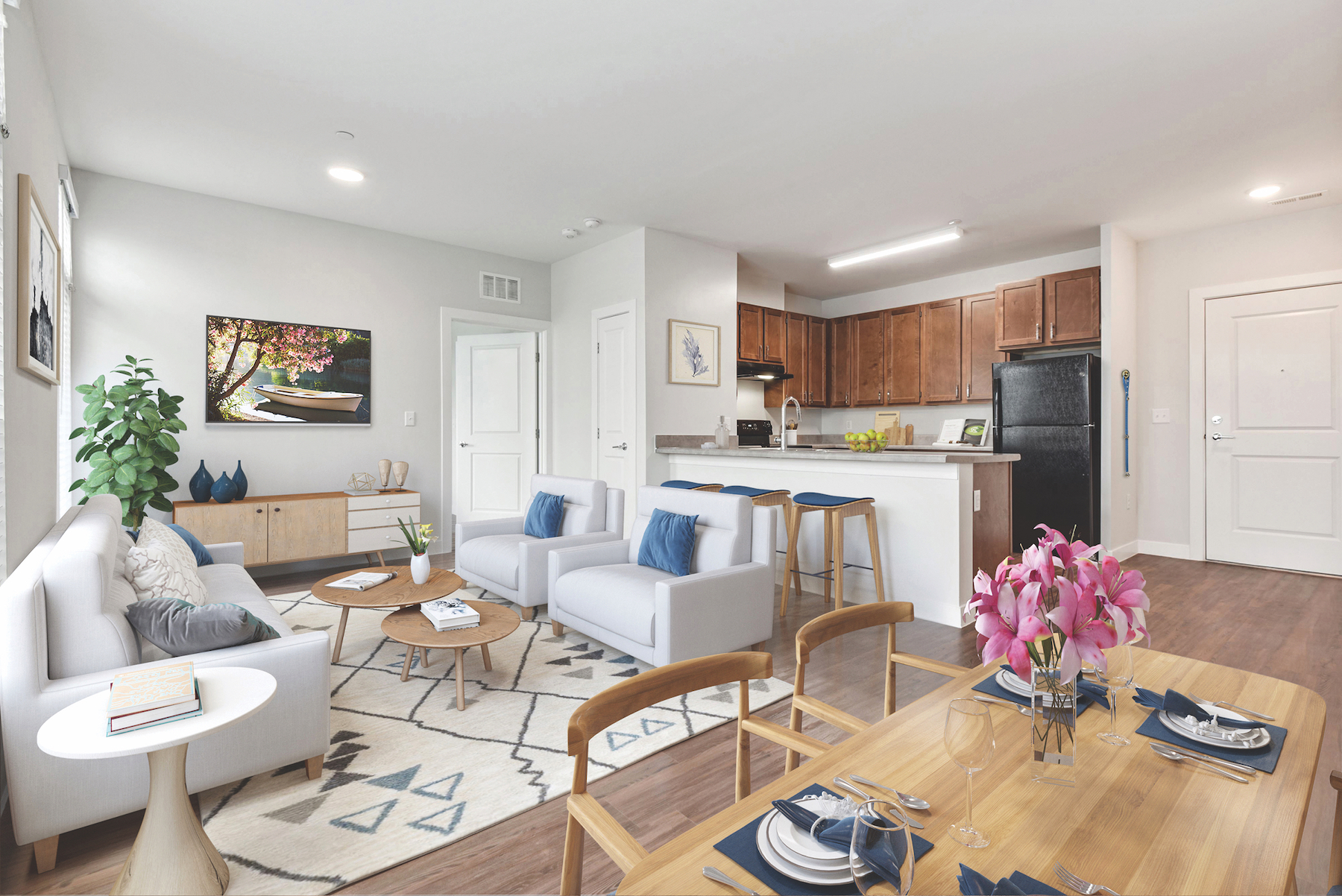
In 1942, the U.S. Housing Authority constructed 15 apartments for African-American war industry workers and their families in the historic Parker-Gray District of Alexandria, Va. The precast modernist units remained in use as public housing until 2018, when they were deemed beyond repair. The KTGY-led project team leveraged the FAR requirements to garner 52 units on the 0.71-acre site: 15 at 30% AMI, 11 at 50% AMI, and 26 at 60% AMI. Six units at the $12 million complex are fully accessible. Lineage earned EarthCraft Gold certification.
6. PULLMAN ARTSPACE LOFTS | Chicago, Ill.
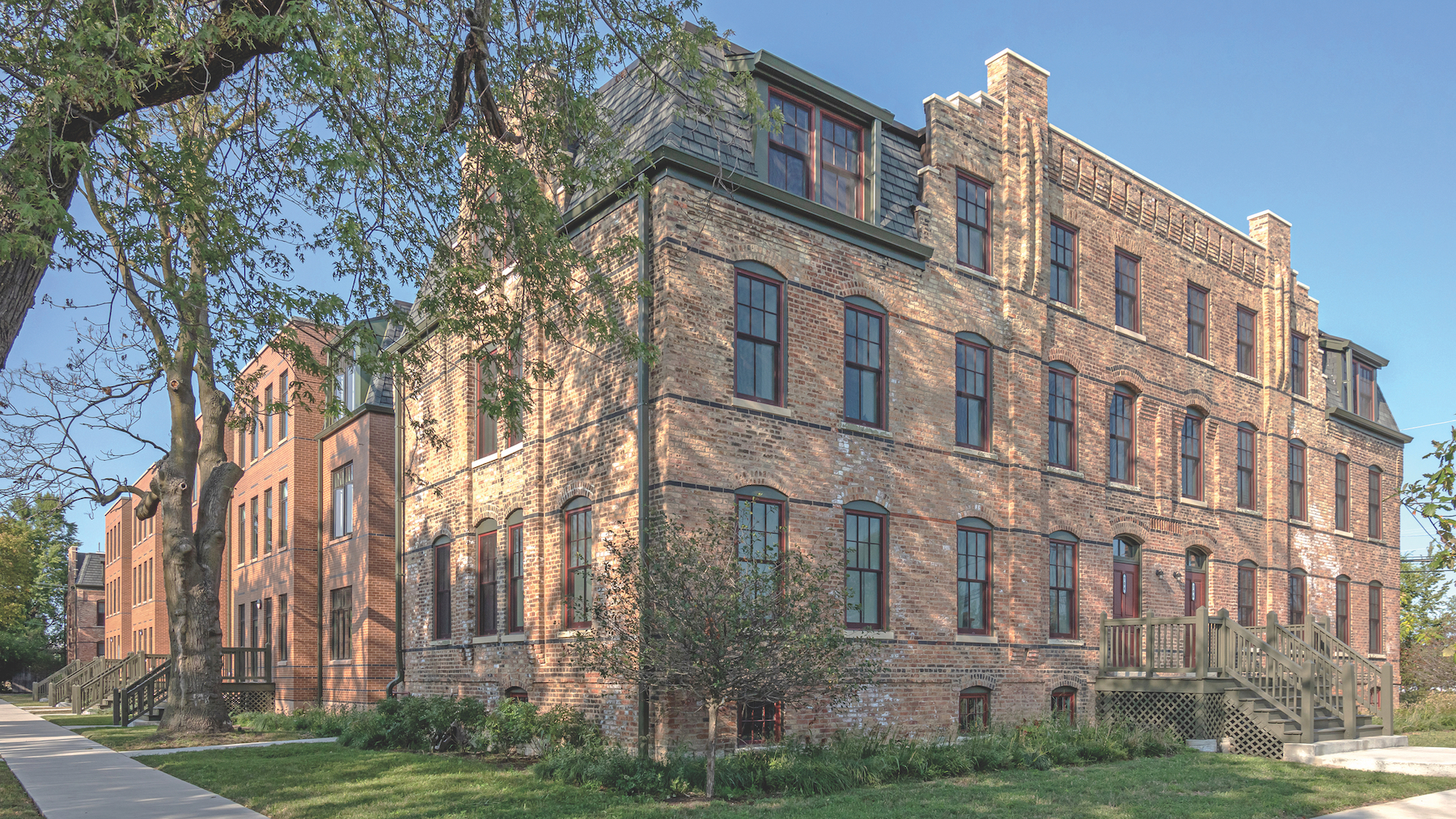
Two abandoned 19th-century landmark apartment buildings were renovated and a new building inserted between them to create 18 one-bedroom and 20 two-bedroom lofts for working artists (60% AMI) in Pullman, a planned community that was the home of the Pullman Car Company in the late 1800s; it was named a National Monument in 2015. Stantec (architect) captained the team of Pepper Construction (CM/GC) and Brown & Momen (CM) for owner/developer Pullman Artspace LLC and co-developers PullmanArts and Chicago Neighborhood Initiatives.
7. PATH METRO VILLAS | Los Angeles, Calif.
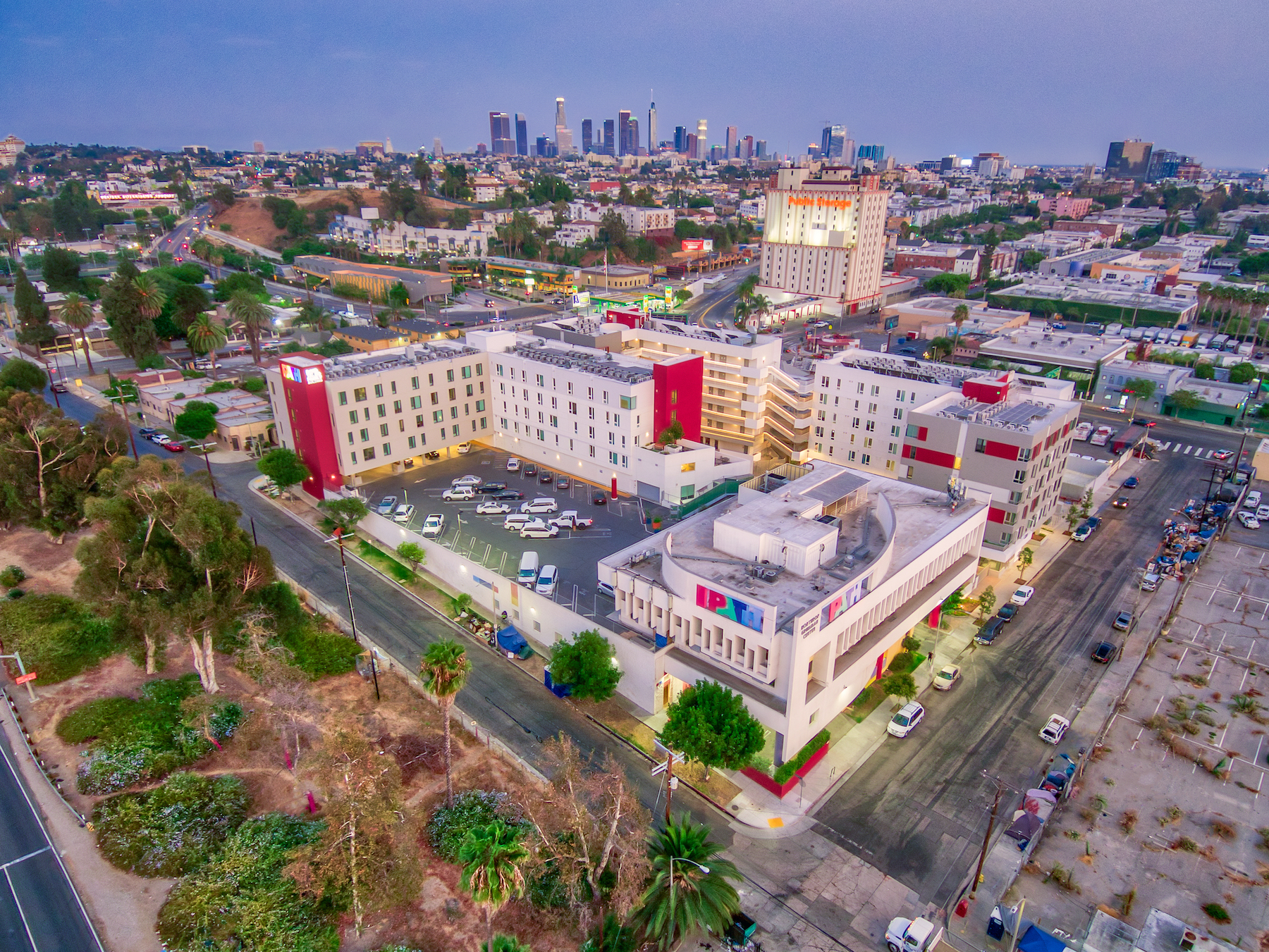
This two-phase enterprise provides 186 studios and one-bedroom units and supportive services for veterans, seniors, and the homeless in the Rampart Village section of Los Angeles. The developer, PATH Ventures, had to secure a zoning change from light industrial to residential. KFA Architecture (architect) worked with Englekirk Engineers (SE); KPFF Consulting Engineers (CE); ME Engineers (MEP); Irvine & Associates (land planner); Landscape Images (landscape architect, Phase 1); AHBE|MIG (landscape architect, Phase 2); and Walton Construction (GC).
8. VILLAS AT THE RIDGEWAY | Yonkers, N.Y.
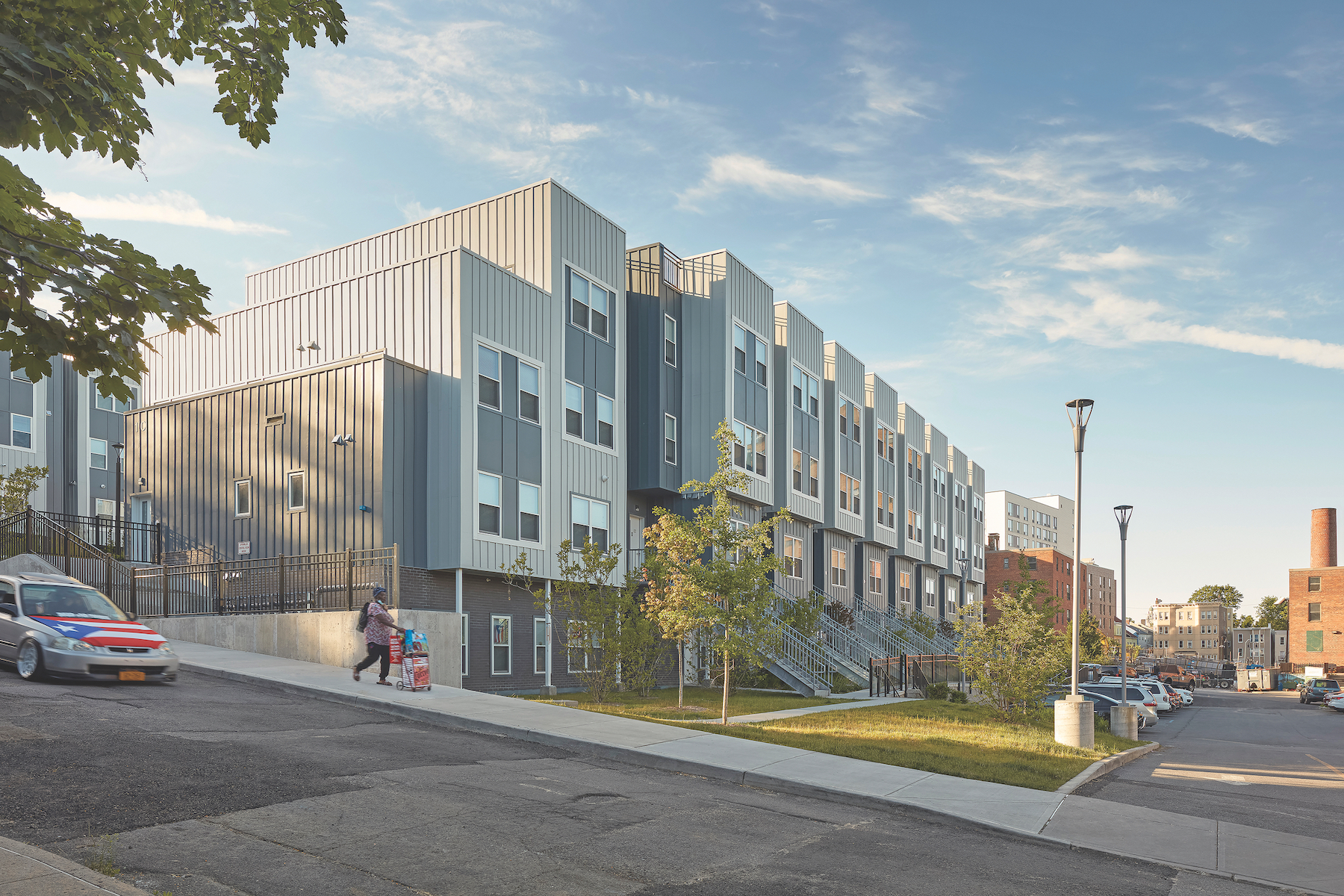
This redevelopment replaced three derelict public housing buildings with 70 two- to four-bedroom apartments at 30%, 50%, and 60% AMI, plus some market-rate units, using 40X16X10-foot modular units fabricated off site. Magnusson Architecture and Planning helmed the project for The Community Builders (developer), with LMW Engineering Group (SE), Philip Habib & Associates (CE), Johnson & Urban (MEP), Terrain-NYC (landscape architect), Steven Winter Associates (sustainability consultant), and JoDi Realty (builder). They also renovated a daycare center that serves the neighborhood.
9. PHOENIX ESTATES II (700 MANIDA STREET) | Bronx, N.Y.
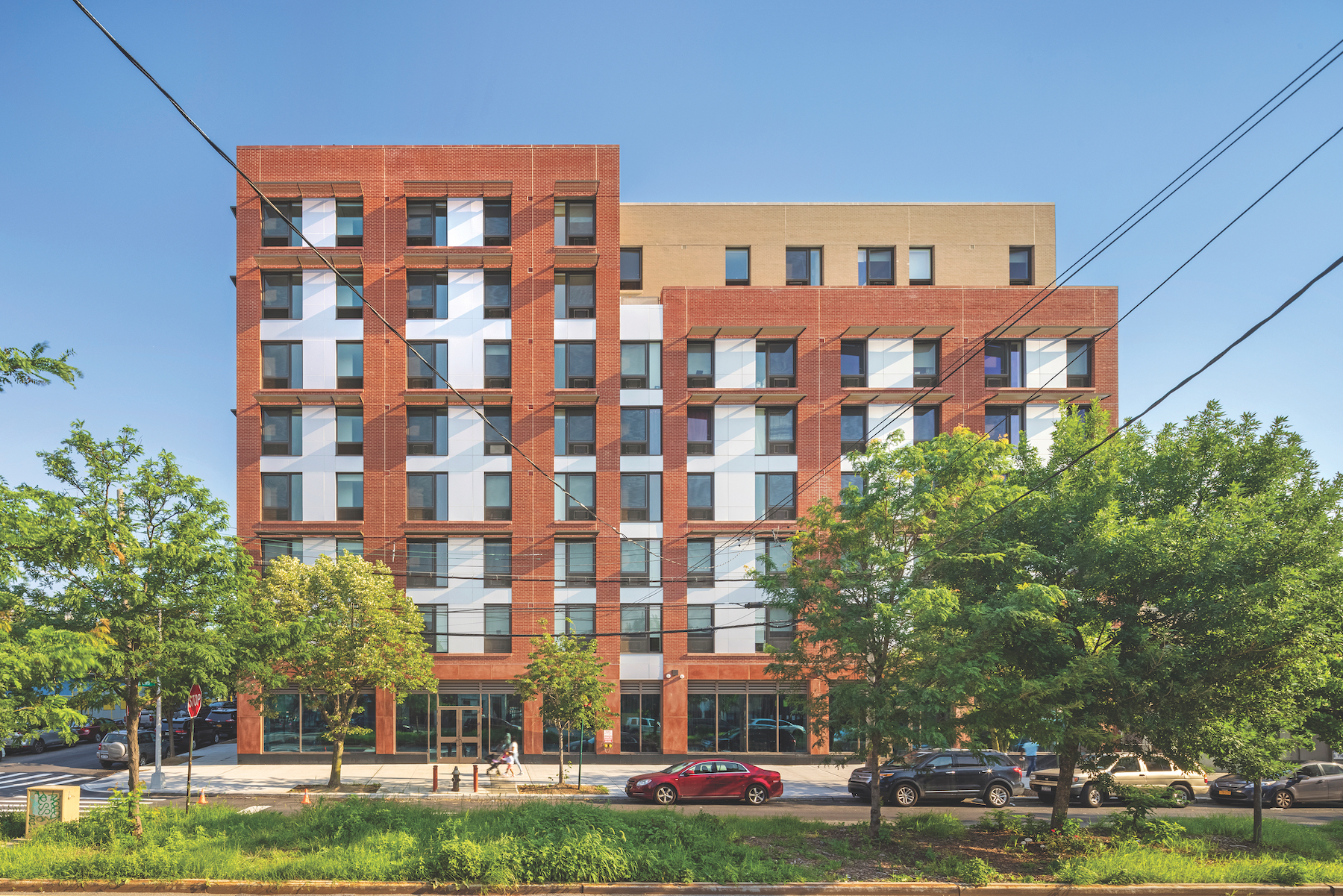
RKTB Architects took advantage of NYC’s 2016 Zoning for Quality and Affordability rules to gain 45% greater FAR for this 102,000-sf mix of 100% affordable senior (48) and family (60) apartments. The senior units are distributed throughout the six- to eight-story L-shaped complex. The $33 million transgenerational enterprise has a 7,100-sf yard and ground-floor space for two art galleries.
10. FROST TERRACE | Cambridge, Mass.
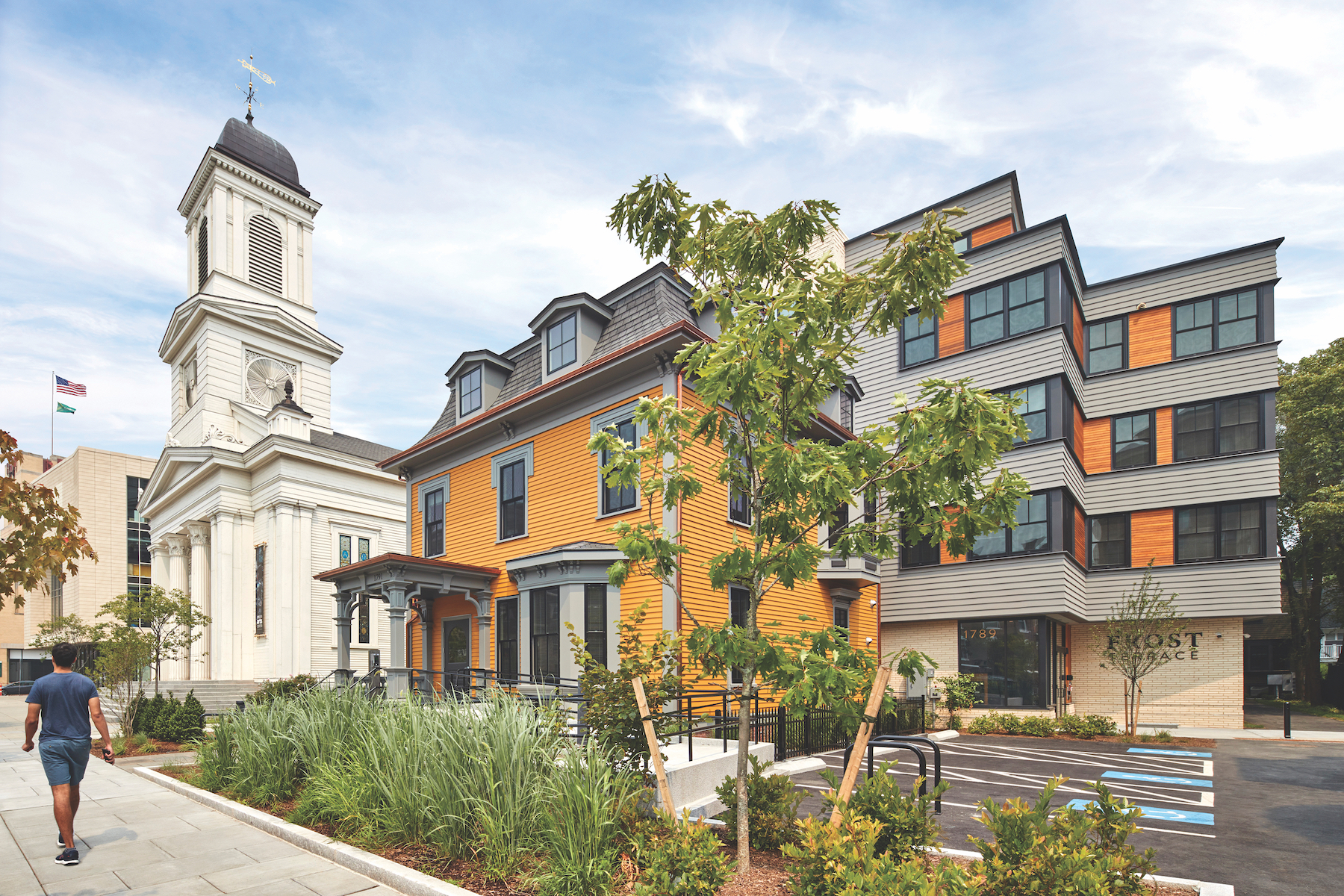
Bruner/Cott Architects inserted a three-story structure amid four restored single-family edifices to form a transit-friendly complex with 40 100% affordable (30-60% AMI) studio and one-, two-, and three-bedroom units. Eight of the apartments have been set aside for Section 8 vouchers. The developers, Capstone Communities and Hope Real Estate Enterprises, used the Commonwealth’s Chapter 40B speedy permit process to get all approvals in one step. They are targeting LEED Multifamily Midrise Gold.
11. WARLEY PARK | Sanford, Fla.

As Central Florida’s first permanent supportive housing community, Warley Park offers 81 one- and two-bedroom apartments for homeless individuals and families. On-site services (provided by Step Up on Second) include mental healthcare, job training, GED classes, and after-school programs. Wendover Housing Partners (developer) was assisted by Slocum Platt Architects and Roger B. Kennedy Construction.
12. WINTON GARDENS TOWERS | Rochester, N.Y.
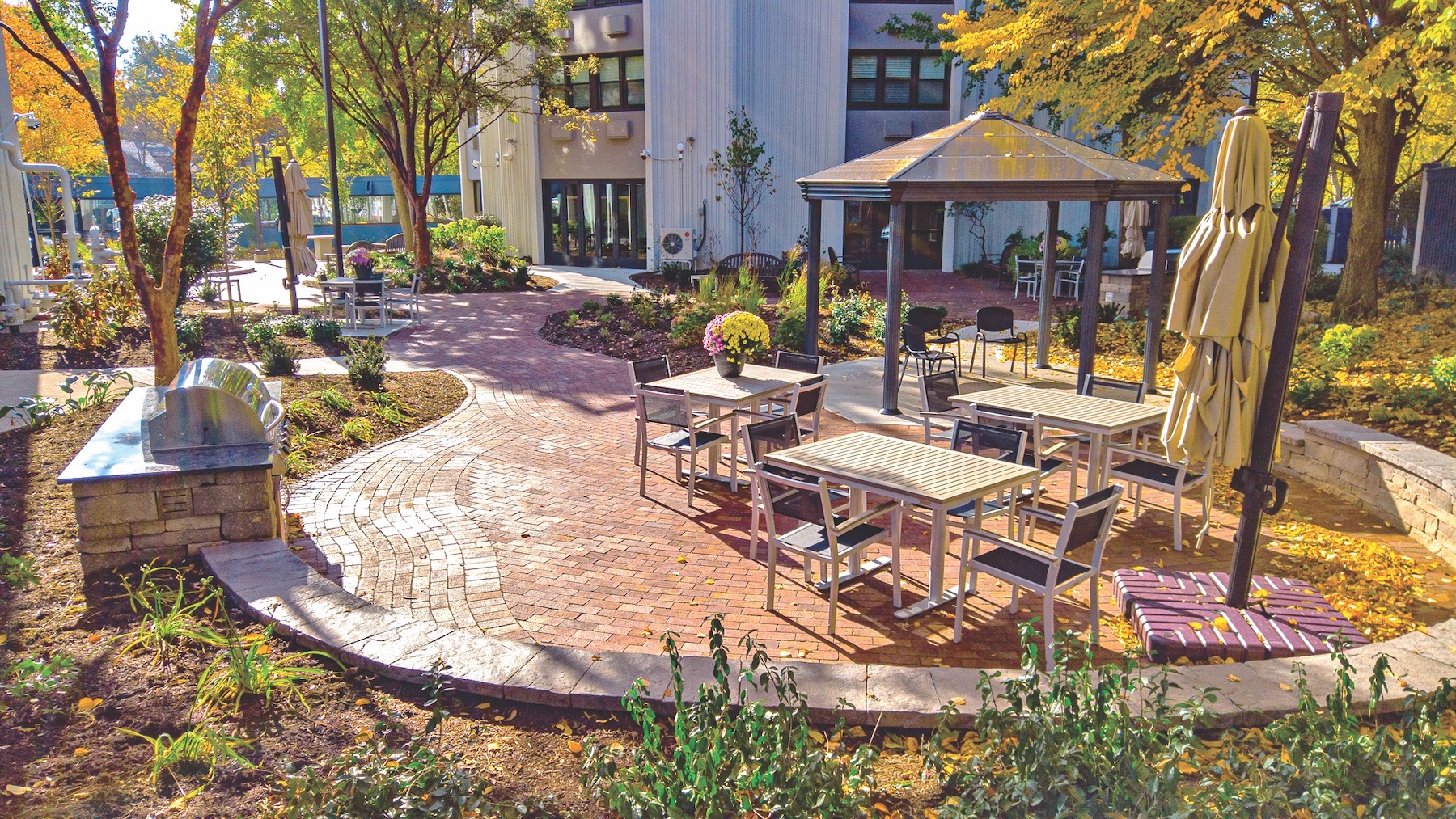
Originally built in 1973, these twin 11-story towers had deteriorated into a crime-ridden hot spot. Community Preservation Partners bought the property in 2018 and, with Rochester’s Cornerstone Group, invested $28.5 million in Energy Star appliances, LED lighting, energy-efficient PTACs, high-efficiency elevators, and security and accessibility upgrades. The 55+ community offers 200 units (425-525 sf) at 30% AMI, six at 60%. Ebesoldt Associates Architecture (designer) and Katerra (builder) performed the work.
13. FAIR OAKS COMMONS | Redwood City, Calif.
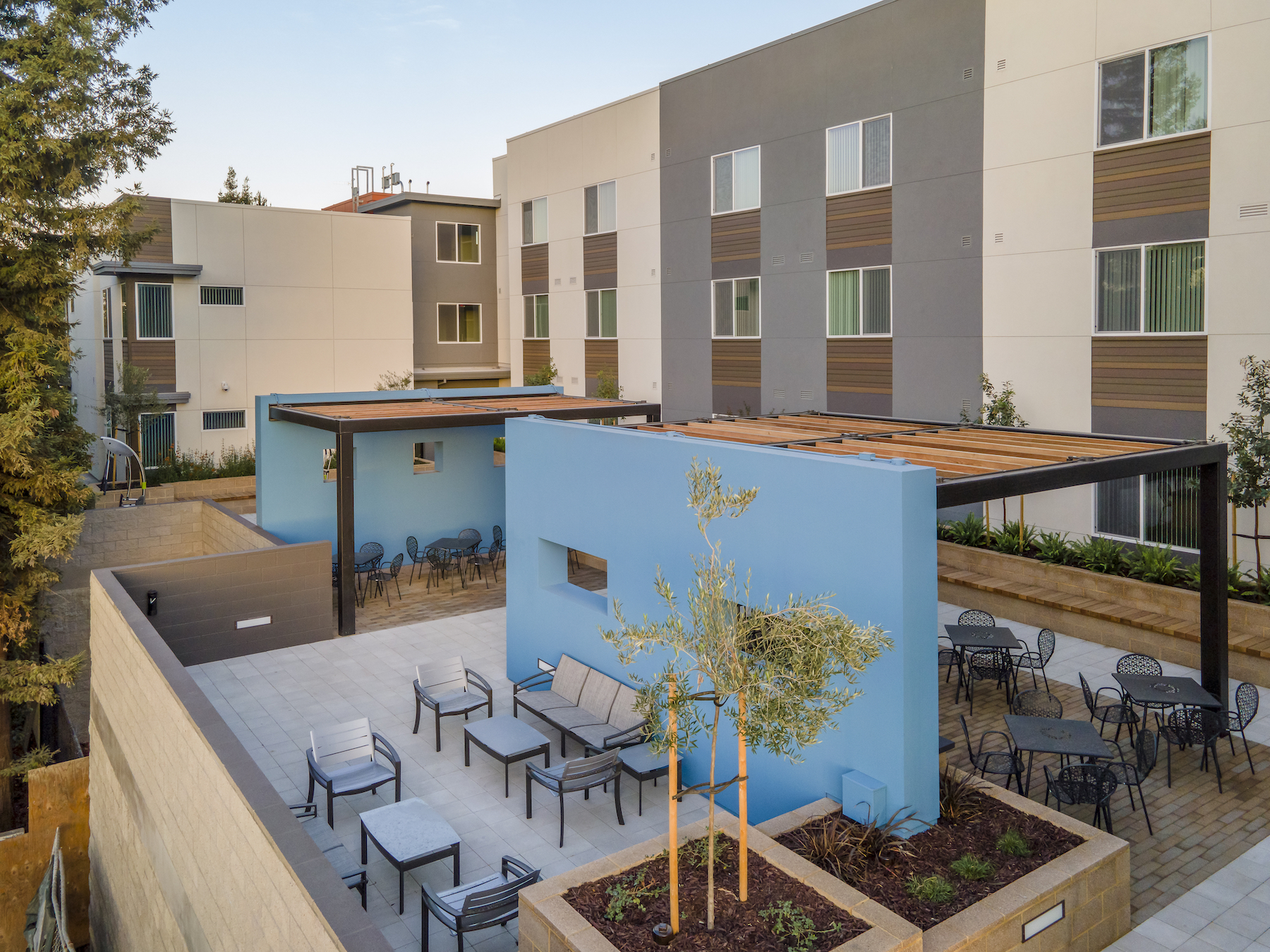
This $42 million complex was the first in San Mateo County to get one-stop approval under California’s SB 35. Its 67 living units (59 furnished) serve families, veterans, and the homeless (30-70% AMI). On-site service agency John Stewart Company provides job readiness programs, financial planning courses, and case management. Dahlin Group (architect) piloted the team: LUK and Associates (CE), Emerald City Engineers (MEP), The Guzzardo Partnership (landscape architect), and L&D Construction (GC).
Related Stories
MFPRO+ New Projects | Oct 30, 2024
BIG’s One High Line finally reaches completion in New York City’s West Chelsea neighborhood
One High Line, a luxury residential project spanning a full city block in New York’s West Chelsea neighborhood, reached completion this summer following years of delays related to investor lawsuits.
MFPRO+ New Projects | Oct 30, 2024
Luxury waterfront tower in Brooklyn features East River and Manhattan skyline views
Leasing recently began for The Dupont, a 41-story luxury rental property along the Brooklyn, N.Y., waterfront. Located within the 22-acre Greenpoint Landing, where it overlooks the newly constructed Newtown Barge Park, the high-rise features East River and Manhattan skyline views along with 20,000 sf of indoor and outdoor communal space.
Multifamily Housing | Oct 28, 2024
A case for mid-rise: How multifamily housing can reshape our cities
Often referred to as “five-over-ones,” the mid-rise apartment type is typically comprised of five stories of apartments on top of a concrete “podium” of ground-floor retail. The main criticism of the “five-over-one” is that they are often too predictable.
Adaptive Reuse | Oct 22, 2024
Adaptive reuse project transforms 1840s-era mill building into rental housing
A recently opened multifamily property in Lawrence, Mass., is an adaptive reuse of an 1840s-era mill building. Stone Mill Lofts is one of the first all-electric mixed-income multifamily properties in Massachusetts. The all-electric building meets ambitious modern energy codes and stringent National Park Service historic preservation guidelines.
MFPRO+ News | Oct 22, 2024
Project financing tempers robust demand for multifamily housing
AEC Giants with multifamily practices report that the sector has been struggling over the past year, despite the high demand for housing, especially affordable products.
Products and Materials | Oct 17, 2024
5 multifamily tech products for your next project
Multifamily housing and technological upgrades go hand-in-hand. From the rise in electric vehicle charging needs to the sophistication of smart home accessories, tech products are abound in the multifamily space.
Codes and Standards | Oct 16, 2024
North Carolina’s code policies likely worsened damage caused by Hurricane Helene
The North Carolina Legislature’s rejection of building code updates likely worsened the damage caused by Hurricane Helene, code experts say. Over the past 15 years, lawmakers rejected limits on construction on steep slopes, which might have reduced the number of homes destroyed by landslides.
MFPRO+ News | Oct 16, 2024
One-third of young adults say hurricanes like Helene and Milton will impact where they choose to live
Nearly one-third of U.S. residents between 18 and 34 years old say they are reconsidering where they want to move after seeing the damage wrought by Hurricane Helene, according to a Redfin report. About 15% of those over age 35 echoed their younger cohort’s sentiment.
Student Housing | Oct 9, 2024
University of Maryland begins work on $148 million graduate student housing development
The University of Maryland, in partnership with Campus Apartments and Mosaic Development Partners, has broken ground on a $148.75 million graduate student housing project on the university’s flagship College Park campus. The project will add 741 beds in 465 fully furnished apartments.
MFPRO+ News | Oct 9, 2024
San Francisco unveils guidelines to streamline office-to-residential conversions
The San Francisco Department of Building Inspection announced a series of new building code guidelines clarifying adaptive reuse code provisions and exceptions for converting office-to-residential buildings. Developed in response to the Commercial to Residential Adaptive Reuse program established in July 2023, the guidelines aim to increase the viability of converting underutilized office buildings into housing by reducing regulatory barriers in specific zoning districts downtown.


